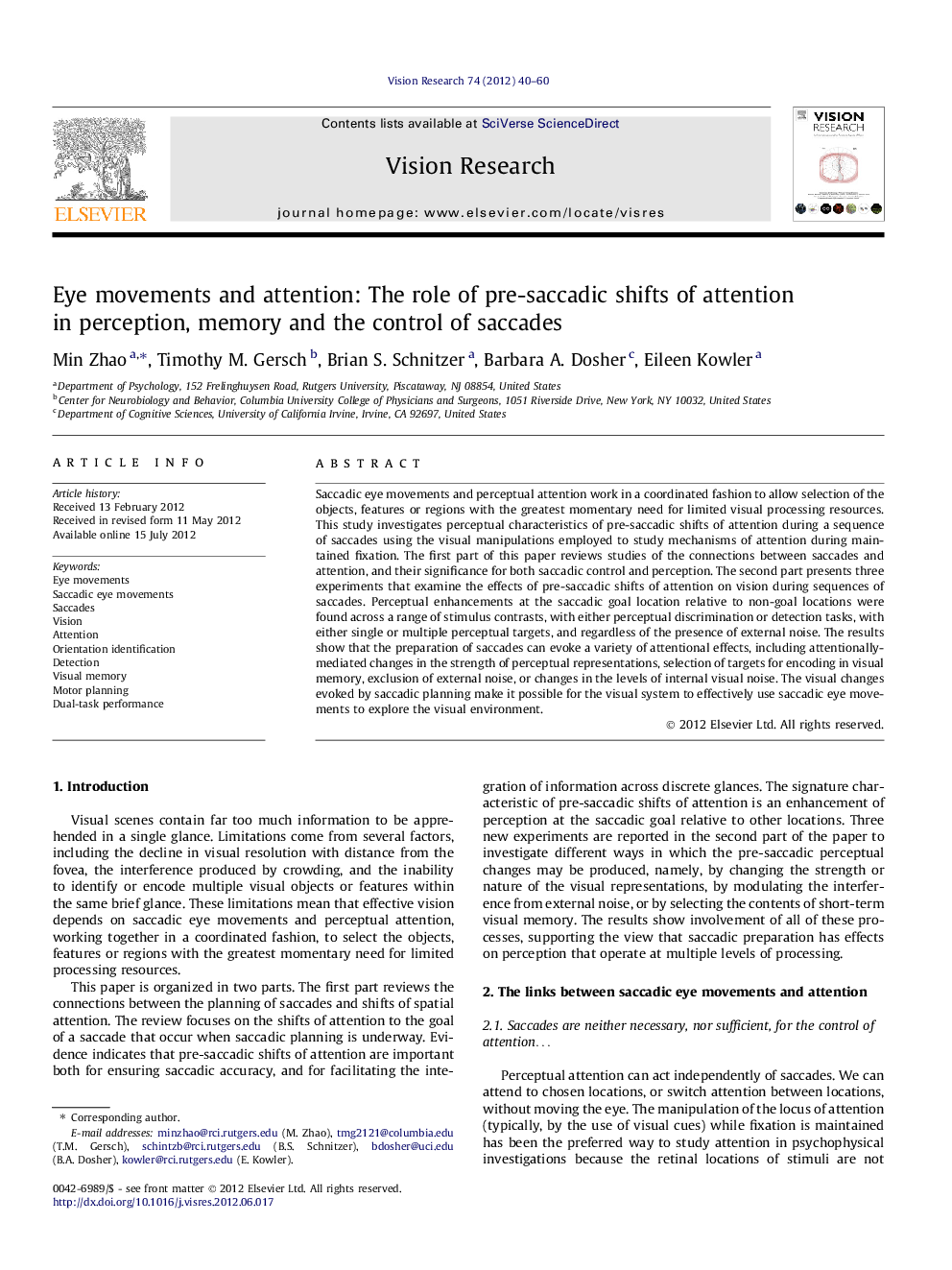| Article ID | Journal | Published Year | Pages | File Type |
|---|---|---|---|---|
| 6203656 | Vision Research | 2012 | 21 Pages |
Saccadic eye movements and perceptual attention work in a coordinated fashion to allow selection of the objects, features or regions with the greatest momentary need for limited visual processing resources. This study investigates perceptual characteristics of pre-saccadic shifts of attention during a sequence of saccades using the visual manipulations employed to study mechanisms of attention during maintained fixation. The first part of this paper reviews studies of the connections between saccades and attention, and their significance for both saccadic control and perception. The second part presents three experiments that examine the effects of pre-saccadic shifts of attention on vision during sequences of saccades. Perceptual enhancements at the saccadic goal location relative to non-goal locations were found across a range of stimulus contrasts, with either perceptual discrimination or detection tasks, with either single or multiple perceptual targets, and regardless of the presence of external noise. The results show that the preparation of saccades can evoke a variety of attentional effects, including attentionally-mediated changes in the strength of perceptual representations, selection of targets for encoding in visual memory, exclusion of external noise, or changes in the levels of internal visual noise. The visual changes evoked by saccadic planning make it possible for the visual system to effectively use saccadic eye movements to explore the visual environment.
⺠Connections between saccades and attention are important for visual tasks. ⺠Perceptual performance is better at the goal of saccades than elsewhere. ⺠Pre-saccadic attention affects both memory selection and visual representations. ⺠Multiple attentional mechanisms are involved: signal enhancement; noise reduction. ⺠The main role of spatial attention is to facilitate active saccadic vision.
